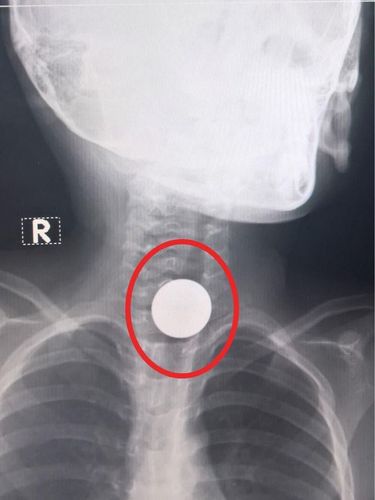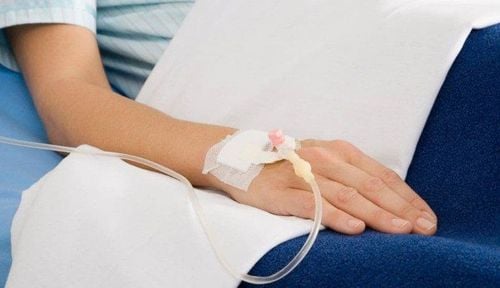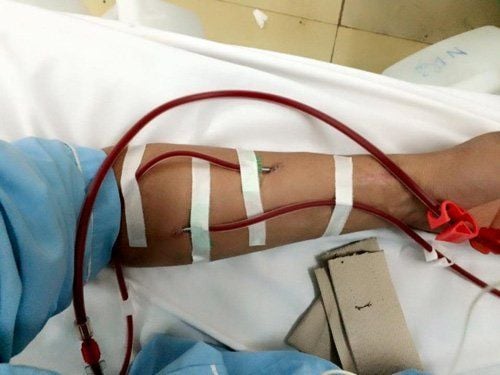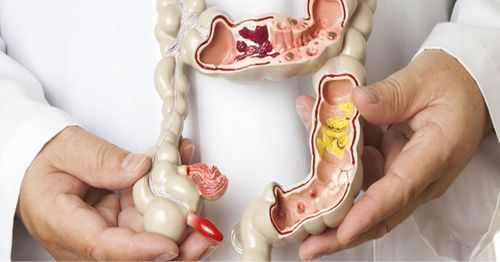This is an automatically translated article.
The article is written by Master, Doctor Le Thai Bao - ICU Doctor - Intensive Care Department - Vinmec Times City International Hospital
Open airway is an important technique in emergency resuscitation. Therefore, these techniques need to be implemented according to the correct procedures to ensure adequate oxygen supply and ventilation for the patient.
1. What is airway clearance?
Open airway is a very important first aid technique in emergency resuscitation. Accordingly, the person performing the emergency needs to ensure oxygen and adequate ventilation for the patient.
2. In what cases is airway clearance indicated and contraindicated?
Airway clearance is indicated for the following cases of airway obstruction:
Airway obstruction due to tongue retraction Airway obstruction due to secretions Obstruction of airways due to foreign objects Accordingly, airway clearance has no contraindications with any patient. However, the person performing the emergency should note that if the patient is suspected of having a cervical spine injury, the cervical spine must be fixed before performing any technique to change the patient's neck position.
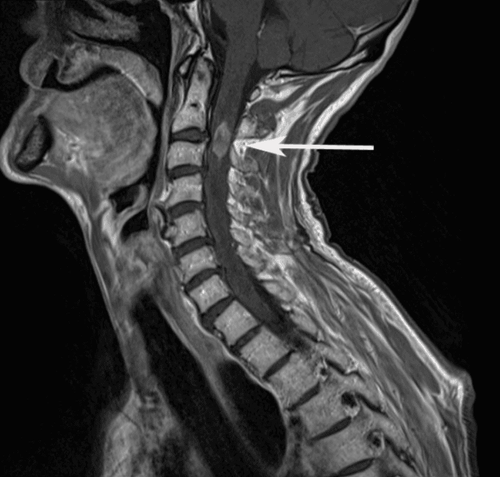
Nếu bệnh nhận bị chấn thương cột sống cổ cần phải cố định lại trước
3. Steps to prepare for airway clearance
Performers: doctors, nurses, technicians with technical proficiency. Means: Forcep foreign body removal, oropharyngeal catheter, nasopharyngeal catheter, sputum suction tube and sputum aspirator. Patient: If the patient is awake, the procedure should be clearly explained. Medical records: Explain the technique to the patient, the patient's family, in case of necessity, ask the patient's family to sign a commitment to agree to perform the technique, and a note to monitor the procedure.
4. Steps to open airway
First, you need to check the records, check the indications, contraindications and agree to perform the procedure. Next, conduct an examination of the patient: Check the patient's vital functions before the procedure.
The steps to perform the airway clearance technique are as follows:
4.1. Head tilt/chin lift technique: The patient lies on his or her back
Step 1: The performer stands to the side of the patient. Step 2: Place one hand under the chin and lift the chin up, the other hand on the forehead, pressing down and toward the body. Step 3: Check airway and remove foreign body if present.
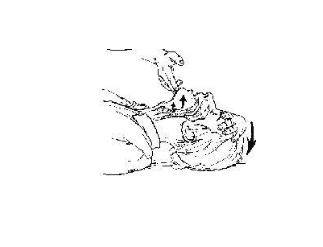
Kỹ thuật ngửa đầu/nâng cằm
4.2 Jaw holding technique
Step 1: The performer stands in front of the patient. Step 2: The index and middle fingers of both hands hook into the corner of the jaw, the thumb rests on the chin. Use the force of the forearm to pull the patient's chin up and toward the head. Step 3: Check airway and remove foreign body if present.
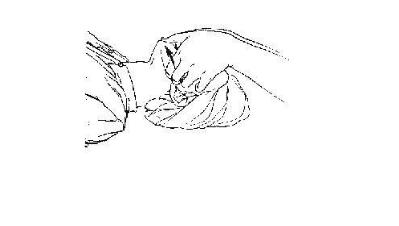
Kỹ thuật ấn giữ hàm
4.3. The Heimlich Technique: When the patient is awake and cooperative
Step 1: The performer stands behind the patient Step 2: With one hand clenched, the other hand holds the wrist of the handle. Use the force of the arm to pull firmly and firmly in sync with the patient's exhalation. Step 3: Check the airway and the foreign body has popped out.
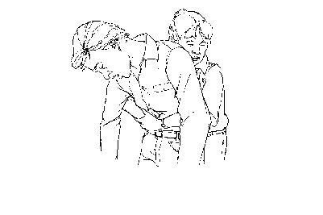
Kỹ thuật Heimlich: Khi người bệnh tỉnh và hợp tác
4.4. Heimlich Technique: When the patient is unconscious
Step 1: The performer sits on the patient's lap. Step 2: One hand is closed, the other hand is crossed with the grip. The elbow is placed on the epigastrium of the patient. Using the weight of half of the body, straighten the arm with the forearm with strong and decisive movements in sync with the patient's exhalation. Step 3: Check the airway and remove the foreign body if any
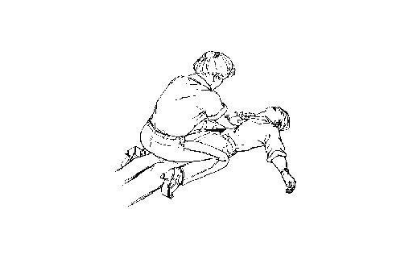
Kỹ thuật Heimlich: Khi người bệnh bất tỉnh
4.5. Technique to remove foreign body by hand
Step 1: The performer stands on one side of the patient. Step 2: Open the patient's mouth. The thumb of one hand hooks into the lower jaw and fills down. The index finger of the other hand hooks into the oral cavity to remove the foreign body. Step 3: Check the airway.
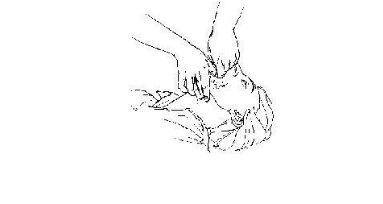
Kỹ thuật lấy bỏ dị vật bằng tay
4.6. Back patting/chest compression technique for young children
prone position
Step 1: The performer places the child face down on the inside of one forearm, keeping the neck straight with the hand. Step 2: Keep the baby's head low and face down. The performer uses the other hand to pat the child's back gently but firmly. Step 3: Turn the baby over to check the airway and remove the foreign body.
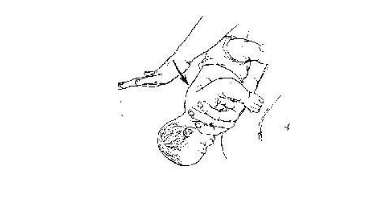
Kỹ thuật vỗ lưng/ép ngực cho trẻ nhỏ
Supine position
Step 1: The performer places the child on the inside of one forearm, keeping the neck straight with the hand. Step 2: Keep the child's head low. The performer uses the index and middle fingers of the other hand to gently but firmly press the child's epigastrium.
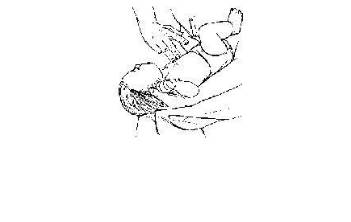
Kỹ thuật vỗ lưng/ép ngực cho trẻ nhỏ tư thế nằm ngửa
4.7. Technique of placing oropharyngeal cannula
Step 1: Place the patient in a supine position. The operator stands to the right of the patient. Step 2: Open the patient's mouth. Bring the tip of the canuin between the teeth, so that the curved part of the canuin is facing up. Continue filling inwards until there is a feeling of entanglement, then slowly turn back so that the medial head follows the anatomical curve of the pharynx. Push in until the outer end is close to the dental arch. Step 3: Check the airway
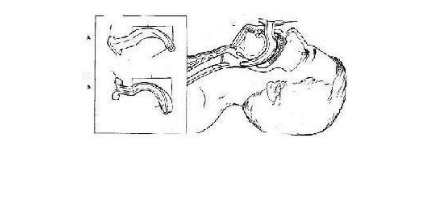
Kỹ thuật đặt canuyn hầu miệng
4.8. Technique of placing oropharyngeal cannula
Step 1: Place the patient in a supine position with the head supine as much as possible. A soft pillow can be placed under the neck. The operator stands to the right of the patient. Step 2: Lubricate the outside of the cannula with paraffin oil. Insert the cannula into one side of the nose and push it slowly until the outer end is close to the side of the nose. Step 3: Check the airway.
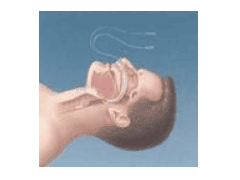
Kỹ thuật đặt canuyn hầu mũi
After completing the steps to open the airway, it is necessary to monitor the patient's vital signs to ensure adequate oxygen supply to the patient. This is a simple technique, with few accidents if performed correctly, helping the patient to be comfortable and all symptoms of obstruction.
Opening the airway is an important technique in emergency resuscitation, so this technique should be performed in medical facilities with full modern medical equipment, a team of doctors, technicians with expertise and skills.
Vinmec International General Hospital has cleared airways and saved many lives in emergencies. Accordingly, the implementation of airway clearance at Vinmec is carried out methodically in accordance with the process by a team of highly skilled medical doctors, modern machinery system. Therefore, when using Vinmec's medical services, customers can be assured and satisfied.
If you have a need for medical examination by modern and highly effective methods at Vinmec, please register here.






